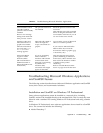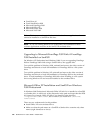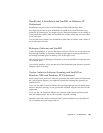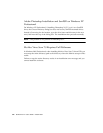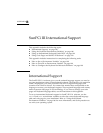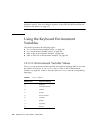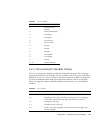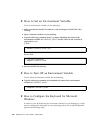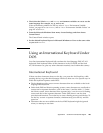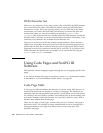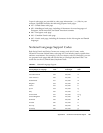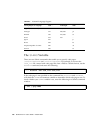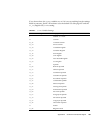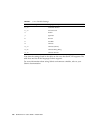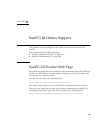
Appendix B SunPCi III International Support 189
1. Check that the Solaris KBCP and KBTYPE environment variables are set to use the
same language (for example, us, gr, and so on).
If the environment variables are not set, refer to “KBCP Environment Variable
Values” on page 187 to set KBTYPE, and to “KBCP Environment Variable Values” on
page 187 to set KBCP.
2. From the Microsoft Windows Start menu, choose Settings, and then choose
Control Panel.
The Control Panel window opens.
3. Set the default keyboard layout in Microsoft Windows or Linux to the same value
as you set in KBTYPE.
Using an International Keyboard Under
DOS
Your Sun international keyboard fully emulates the local-language DOS AT/102
keyboard. Each keyboard offers all the characters in the US-ASCII and the local
AT/102 character set, plus any other characters routinely used within that country.
International Keyboard
If there are three characters shown on the key, you press the Alt-Graph key while
pressing the key to get the third character. However, there are a few special ways in
which the keyboard operates under DOS:
■ The keyboard provides access to more characters than are available on the local-
language DOS keyboard.
■ Under both DOS and Solaris operating systems, some characters are used both as
accents and as separate characters, such as the carat (^) and the tilde (~). Under
the Solaris system, these characters have separate keys—one for use as a floating
accent and one for the separate character. Under DOS, there is one key that
provides both functions. To use the key to enter a floating accent, press the key. To
use the key to enter a separate character, simultaneously press the key and the
space bar.
■ Characters that are not available on the local DOS keyboard might be ignored
when you attempt to use them.



